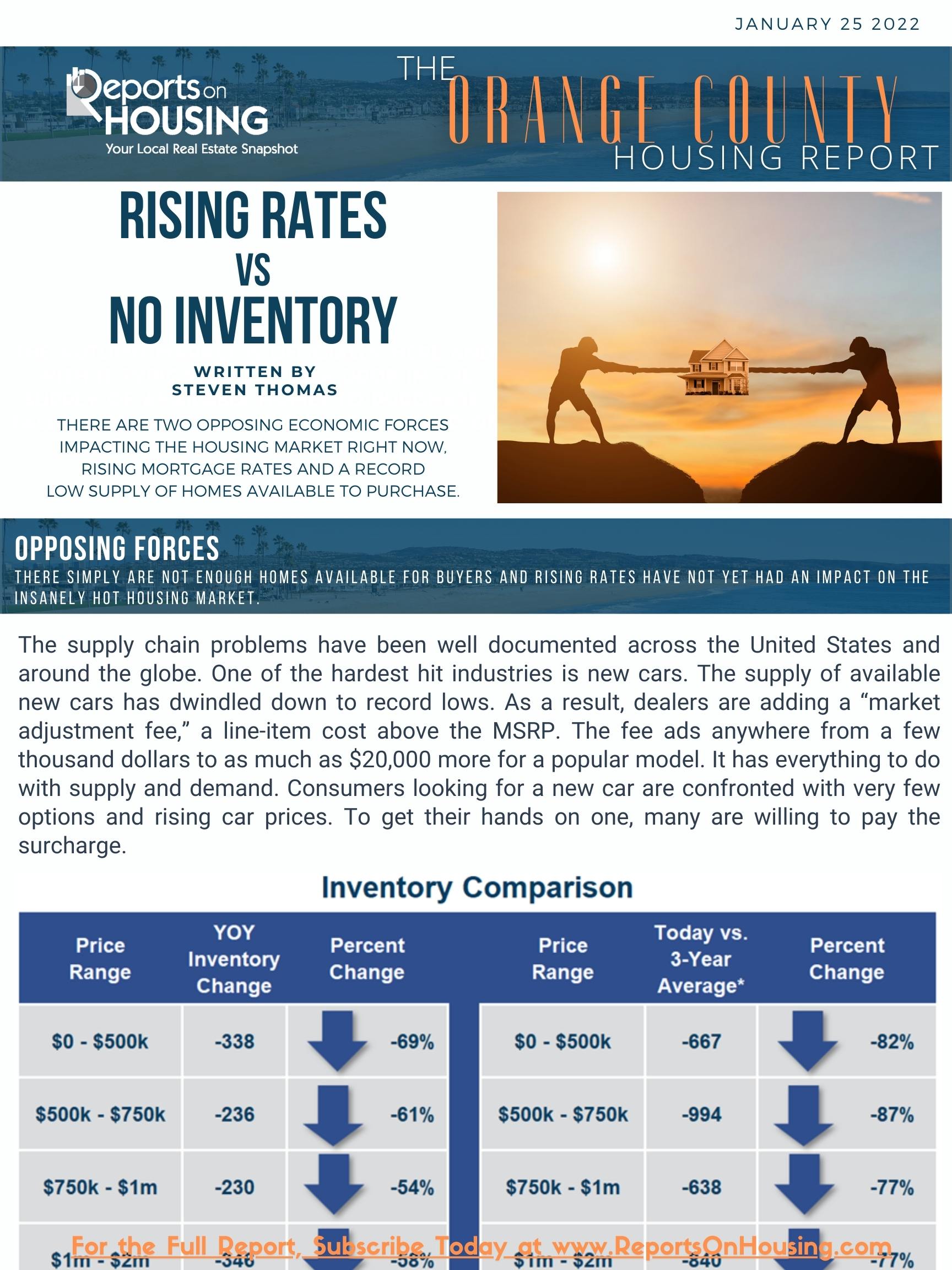THERE ARE TWO OPPOSING ECONOMIC FORCES IMPACTING THE HOUSING MARKET RIGHT NOW, RISING MORTGAGE RATES AND A RECORD LOW SUPPLY OF HOMES AVAILABLE TO PURCHASE.
The supply chain problems have been well documented across the United States and around the globe. One of the hardest hit industries is new cars. The supply of available new cars has dwindled down to record lows. As a result, dealers are adding a “market adjustment fee,” a line-item cost above the MSRP. The fee ads anywhere from a few thousand dollars to as much as $20,000 more for a popular model. It has everything to do with supply and demand. Consumers looking for a new car are confronted with very few options and rising car prices. To get their hands on one, many are willing to pay the surcharge.
Housing feels like it too is suffering from the supply chain problem with seemingly nothing available to purchase. Last year the inventory in Orange County started the year at an all-time low with 2,633 available homes. It hit 2,214 on June 10th, rose and peaked in June, and then continued to plunge until only 954 homes were on the market on January 1st of this year, just a few weeks ago. Today, there are only 1,080 homes, adding only 126 during the first few weeks of the year. The difference between this year and last year’s record low is striking. There are 1,547 fewer homes today, 59% less. Every price range has been similarly impacted.
Since ringing in a New Year, mortgage rates have been steadily climbing, eroding home affordability. According to Freddie Mac’s Primary Mortgage Market Survey®, rates have risen from 3.05% on December 23rd to 3.56% as of January 20th, up a half of a percent in just 4-weeks. It has many speculating that even higher rates are coming. Throw in a volatile stock market, and many are beginning to wonder if these changes are just the beginning of the end to the pandemic run on the housing market.
Why has the rise in rates not yet affected the housing market? The answer is simple: rates have not climbed high enough to materially slow demand. Mortgage rates climbed considerably in both 2013 and 2018, which caused a shift in the market. Demand cooled, the inventory increased, market times grew, and the market slowed from a Hot Seller’s Market to a much more balanced market. In 2013, rates rose from 3.34% to 4.57%, and in 2018 they rose from 3.99% to 4.94%. The recent runup in rates is much smaller. If they continue to climb, then the market could cool. But, for now, Wall Street and investors have digested future Federal Reserve moves and they most likely will not rise much more from here. Rates would need to climb to 4% or higher to slow housing. At 4%, the difference in payment for that same $900,000 mortgage example would be $478 more per month, or $5,739 per year. At 4.25%, it would be $608 per month, or $7,299 per year.


